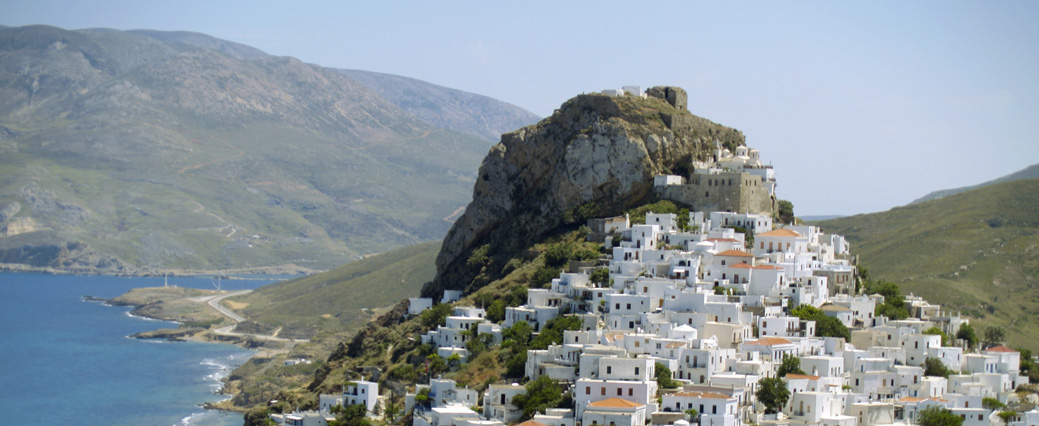At the highest point of Skyros, on a steep cliff 179 meters above the vastness of the Aegean Sea, you will see the castle of Skyros.
The rock was the center of the island’s events from the prehistoric and the mythological era. Here was the ancient citadel and seat of King Lycomedes. At "Cave Andros", king of Athens,Theseus, was killed by Lycomedes. Also here is the place that Achilles hid while he was dressed as a woman trying to avoid the Trojan War.
The citadel was fortified throughout the classical period and then again in Roman and Byzantine times. In the 8th and 9th AD century Skyros suffered from the raids of the Saracens culminating in the fall of the castle in 900.
In the 13th century after the conquest of Constantinople by the crusaders (1204), Skyros passed to the jurisdiction of the Venetians and Marco Sanudo, the leader of the Duchy of Naxos. Sanudo granted Skyros, together with other islands of the Cyclades and the Sporades, to brothers Jeremiah and Andrea Gizi.
Over the next centuries Skyros continued to be under Venetian rule. In contrast, however, with other islands, the Venetians made no great effort to protect the residents. The first half of the 15th century, the island was almost deserted again due to pirate raids. It was still under the Venetian dominion even after the fall of Constantinople to the Turks. In 1537 it was conquered and looted by Turkish admiral-pirate Barbarossa. Throughout this turbulent period, and later until the 19th century, the castle was the refuge of the inhabitants who seeked protection in the castle.
After the middle Byzantine period the castle remained almost unaltered as it was not that important neither for the Venetians nor for the Turks. Moreover, the Turks walked away quickly in 1780, after the Orlov revolt. Nowadays you can see the remains of the castle.



